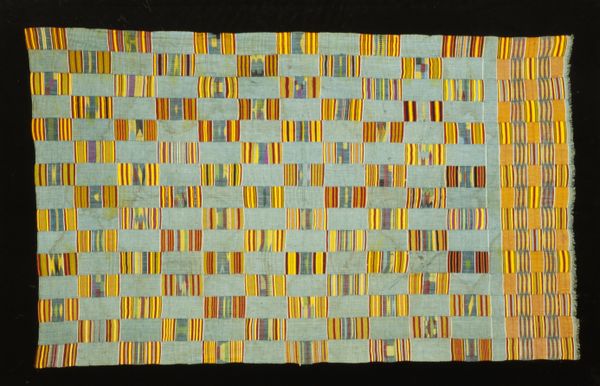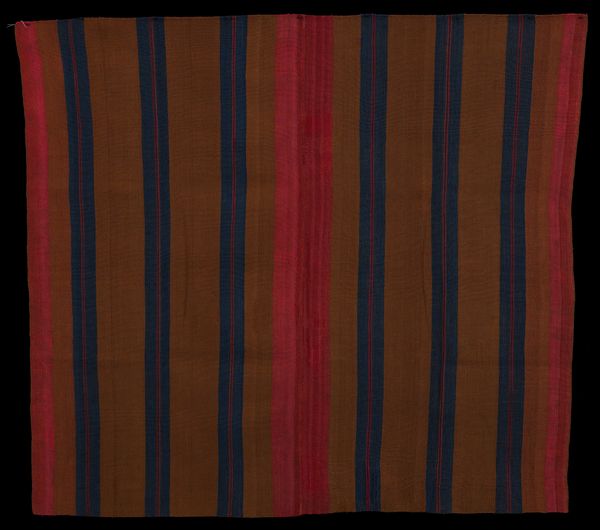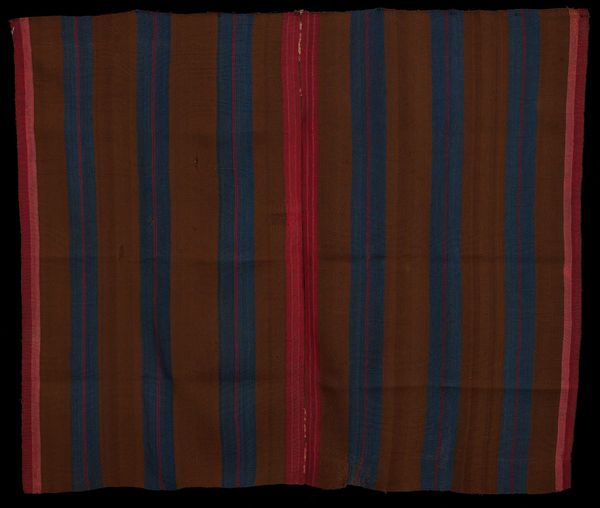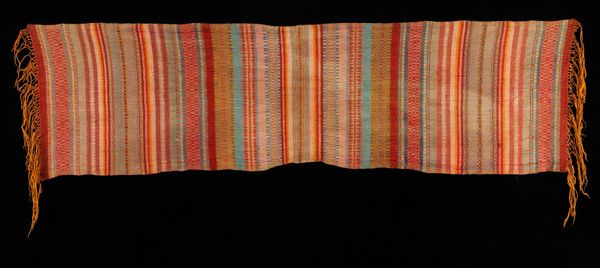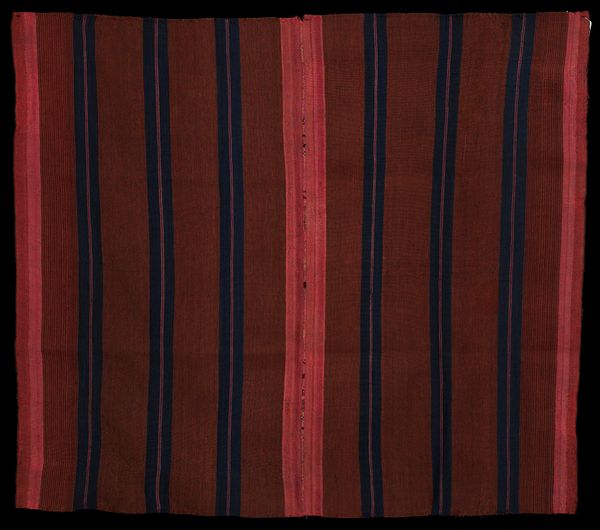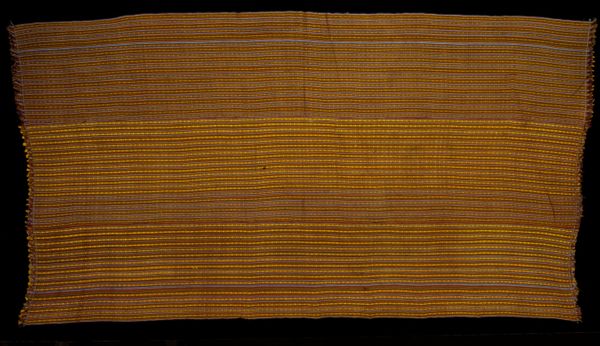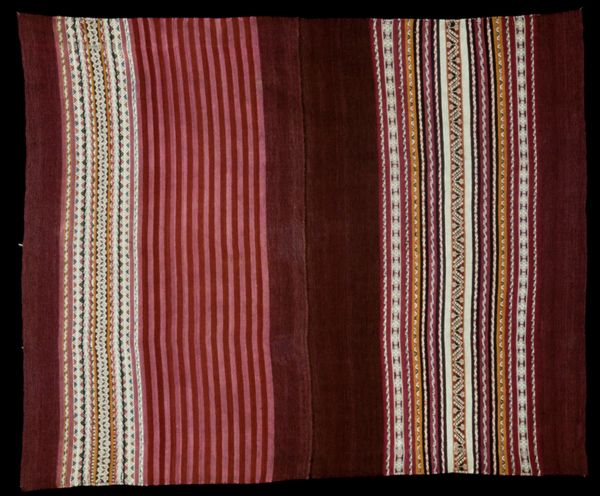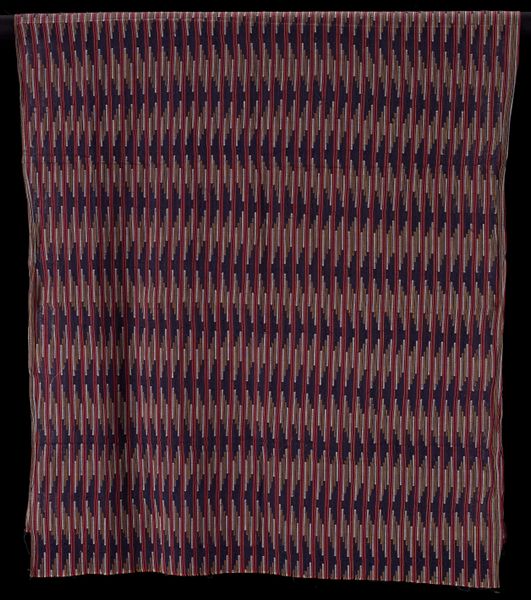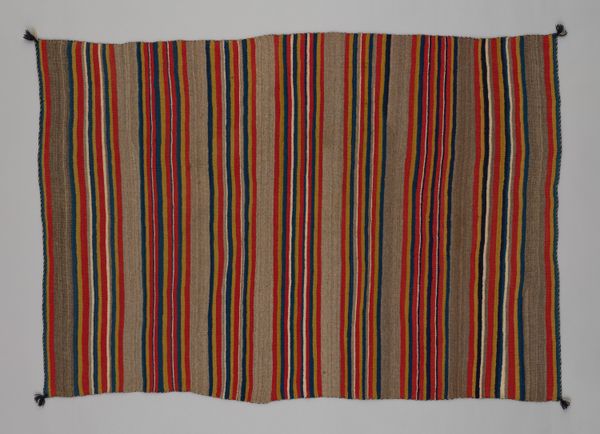
textile
#
textile
#
geometric
#
line
Dimensions: 38 1/4 x 21 in. (97.16 x 53.34 cm)
Copyright: Public Domain
Curator: Well, this object, titled "Pillow Case," dates back to the 19th century. It's part of the textile collection at the Minneapolis Institute of Art. What are your first thoughts on it? Editor: It strikes me as both simple and somehow comforting, despite the somewhat stark color combination of reds, greens, and golds. It's incredibly geometric. Curator: The creation and use of something so functional begs the question, who was making these pillowcases, and under what conditions? The ubiquity of such items belies a vast network of often-unseen labor. Editor: Absolutely. We must consider this within a context of domestic labor, often undervalued and feminized, especially in the 19th century. What stories could be woven into these stripes, thinking of sleep, of dreams, perhaps even dissent during slumber? Curator: We have to acknowledge the process too, understanding the fibers themselves—are they locally sourced? How were they dyed, woven, constructed? These methods speak volumes about the period's craft practices and resource availability. I think too of trends and fashions, something maybe destined for export, not always homemade by those using it. Editor: It would also be useful to delve into the class and cultural implications of this textile. For whom was this made? Is it possible to link these patterns to specific communities, reflecting unique cultural traditions and meanings in the realm of textiles and interiors? Curator: We need to remember too, this isn't "art" in the traditional sense, but an object of everyday life. It pushes boundaries, connecting craft and aesthetics to function, blurring the line between the fine arts and daily living. Editor: And considering our roles and subject positions as we look at something produced by someone unknown for some unknown people--how we bring our own interpretations, based on a whole nexus of social and political identities, always plays an important role in determining the 'truth' about the work itself. Curator: Thinking of it as more than an artifact--it's a testament to unseen makers, and invites important discussions of craft and culture in material forms. Editor: A compelling insight into the relationship between the personal, the political, and the beautifully mundane object, revealing larger discussions on labor and meaning.
Comments
No comments
Be the first to comment and join the conversation on the ultimate creative platform.
